Our verdict on the Pixel 8 Pro, Google’s most powerful phone
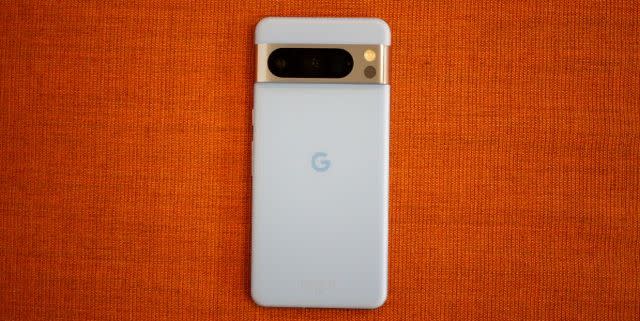
AI is everywhere these days, and like the super serum pumping through Steve Rogers’ veins, the Pixel 8 Pro is injected with it – with algorithms baked into its DNA offering new ways to edit photos, limit background noise from videos and generate unique wallpapers. Combine those features with a big display, smooth performance and a (slightly) refined design and you get the best Pixel handset for power users.
Compared to the smaller Google Pixel 8, you'll be equipped with a third telephoto lens, a more variable refresh rate, a brighter screen, longer battery life, pro camera controls, the promise of a new Video Boost mode to enhance the look of recorded footage using AI and (for some reason) a built-in temperature sensor. For those extras, you pay £999 – £300 more than the base model.
We've spent a week using the Pixel 8 Pro as our daily handset, going hands-on to find out how it compares to the previous batch of Google phones – including the Pixel 7 and the Pixel 7 Pro, alongside the much more affordable Pixel 7a. While we're not convinced that it's the best option for more casual users, we reckon that the plethora of AI modes and that extra camera lens will be attractive to photographers.
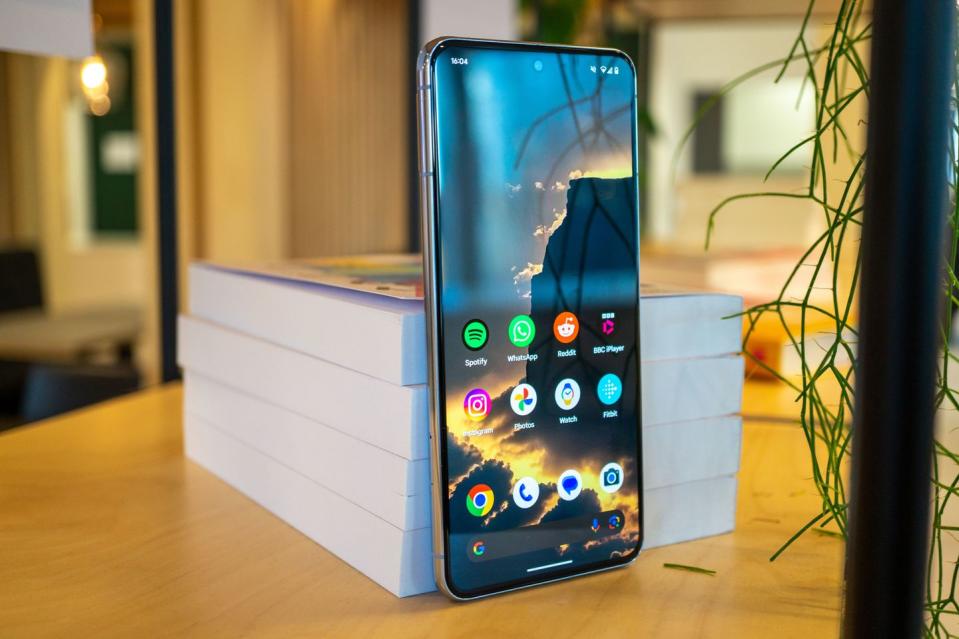
Google Pixel 8 Pro key specs
Screen size: 6.7 inches
Resolution: 1344 x 2992 pixels
Operating system: Android 14
Processor: Google Tensor G3
Cameras: 50MP wide, 48MP ultrawide, 48MP telephoto, 10.5 selfie
Battery: 5,050mAh
Storage: 128GB, 256GB, 512GB, 1TB
RAM: 12GB
Weight: 213g
Water resistance: Yes, IP68
MicroSD slot: No
Google Pixel 8 Pro design
Let's be honest: the Pixel 8 Pro looks pretty much like every other Google phone since the lineup's design was refreshed two years ago. But peek closer and there are a few new touches: the corners are a bit more rounded, the screen no longer slopes off at the edges and – most noticeably when you hold it – the back is now a matte finish instead of the glossy panel you'll find on the back of the rest of the lineup.
The Pixel-defining camera bump that runs along the full width of the back is still made with a shiny aluminium instead of a brushed polish on the more affordable models, and the main cameras are now enclosed inside a single pill-shaped module instead of two separate areas. The camera hump protrudes slightly more than the Pixel 7 Pro, but you won't notice that during day-to-day use. We don't mind it.
For us, the overall design of the Pixel still really works. The finish is more fingerprint resistant than the previous Pro models, but even though it feels like a luxury touch you will want to invest in a case for extra grip and protection. This is still a very slippy smartphone. The fresh new 'Bay' blue colour is really nice, but this was ultimately hidden by a Mous cover so we didn't actually get to enjoy it for too long.
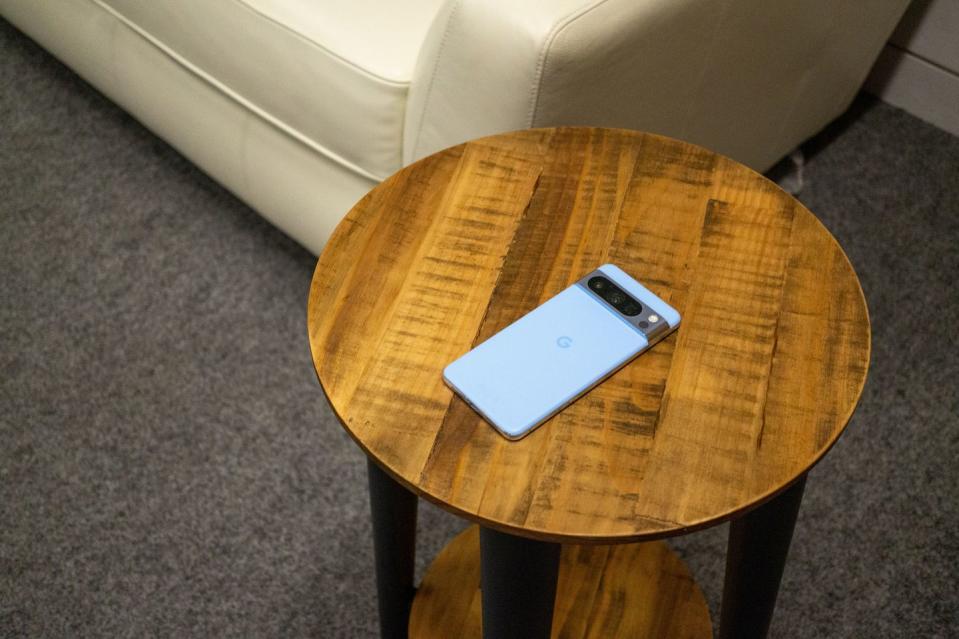
Google Pixel 8 Pro display
The Pixel 8 Pro packs the brightest screen of any Google phone. It's now called a "Super Actua" display, and while that's purely marketing lingo we are impressed by the popping colours of the 6.7-inch panel. It delivers 1600 nits of brightness, which is the same as the iPhone 15 but more than the prior Pixel Pro, which was 1000 nits.
We've used the phone in all types of conditions – from in lower light while relaxing on the sofa in the evening to a rainy day in a muddy field pumpkin picking – and there's never been an issue with seeing the screen. Even in brighter conditions, with sun glare while walking to the office, we can read text on the screen and apps without issue.
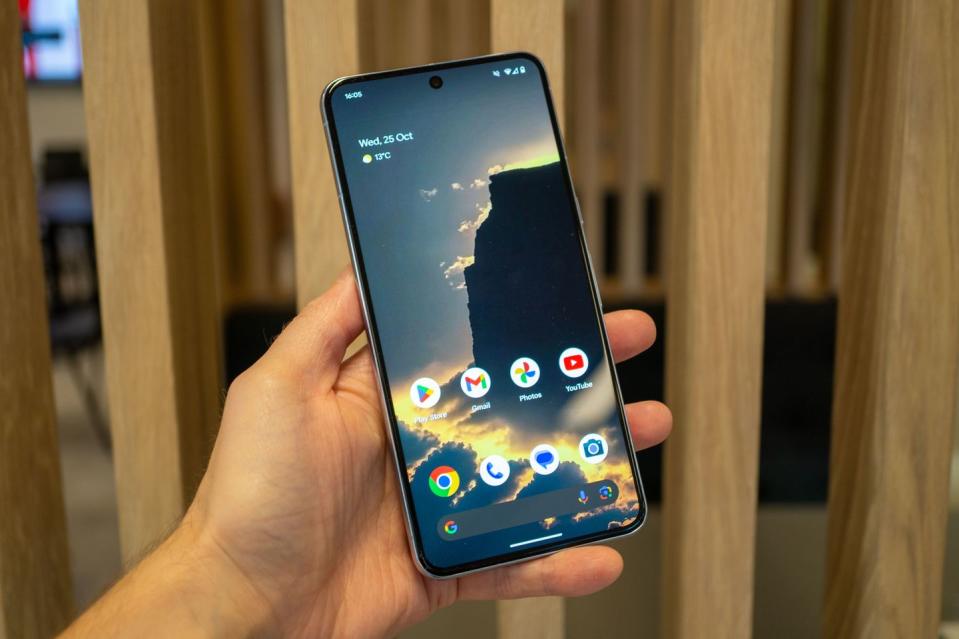
The refresh rate (which determines how smooth the phone feels to view and navigate) adjusts between 1–120 Hz, and it lowers right down when it's idle or barely in use to save on battery. For comparison, the base Pixel 8 model is variable between 60Hz and 120Hz, so this Pro phone has the edge in display performance. This feature will be easily missed by casual scrollers, but appreciated by Pro users.
One of the most obvious differences between the Pixel 8 and the 8 Pro is the physical size of the display. Going from the base model's 6.2 inches to the Pro's 6.7-inch panel takes getting used to, but if you're constantly watching YouTube or any of the streaming platforms, this is the Pixel that you want to have in your pocket.
The OLED screen has frankly stunning image quality for movies or TV shows, with inky blacks and fantastic contrast. We browsed a few Netflix shows, including The Witcher, Titans and Mindhunter, and even the darkest of scenes looked great. We find ourselves turning the brightness way down when using the phone at night, but there's also an effective adaptive mode that'll handle that for you, too. Thanks, AI.
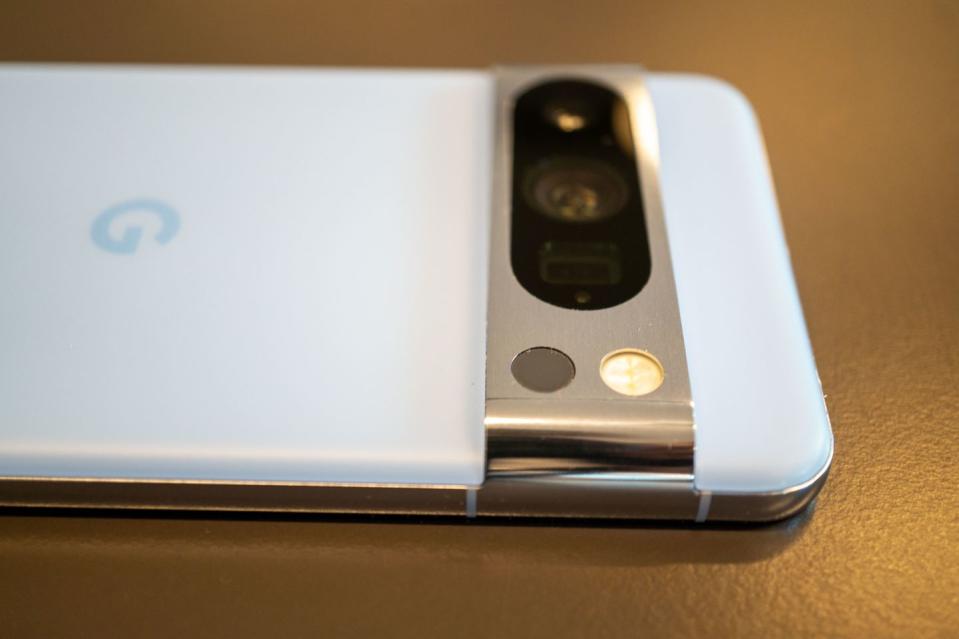
Google Pixel 8 Pro camera
It won't be a surprise to anyone who has used a Pixel before, but the camera system is one of the most capable that you'll find on any smartphone – easily standing toe-to-toe with flagship handsets from Apple and Samsung. Mysterious AI and machine learning algorithms are doing a lot of the heavy lifting behind the scenes, and while we're not always sure how it's working, the results are consistently impressive.
There are three rear cameras: a 50MP main shooter, a 48MP ultra-wide and a 48MP telephoto with 5x optical zoom. It's the ultra-wide camera that's been upgraded from the 7 Pro – where it was 12MP, and having that zoom is one of the main differences from the standard Pixel 8. On the front, the selfie lens is a perfectly fine 10.5MP.
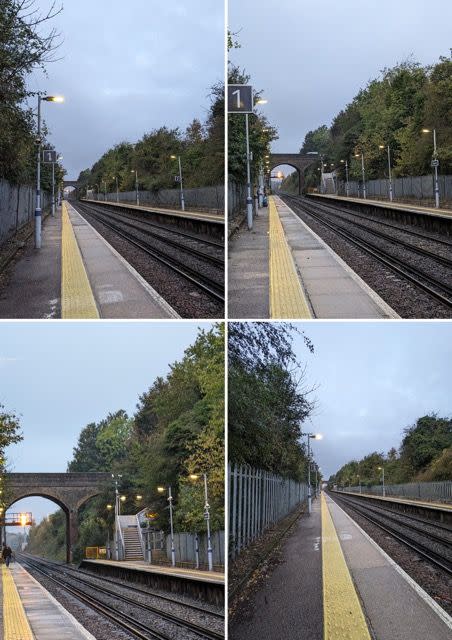
While the results are more contrasty than the iPhone 15 – so not quite as accurate – we like the colourful results, and always find that the pictures are sharp, too. The portrait mode is also particularly good thanks to its pleasing background blur.
It's the various AI editing modes that really help the handset to stand out from its peers, and unlike the base model there's a Pro mode – letting you bump the resolution to a full 50MP (it's 12MP by default), tinker with settings such as the brightness, focus, shutter speed and exposure, and quickly switch to take snaps in a RAW format to keep more details and have more options in the edit – at the expense of your built-in storage. In our testing, a JPG takes up around 2.5MB on the device, while a RAW snap in 50MP eats up a much larger 12MB each time.
Magic Editor is one of the new AI modes – as long as your photo is backed up to Google Photos you can tap a button to scan it and suggest cool edits, whether it's brightening the sky or turning your snap into a scene that looks like a painting. It mostly works – but it can be slow (for us, generating the changes takes more than 10 seconds every time) and we're not convinced we'll actually do much with the results.
Here's an example:
Another feature of Magic Editor lets you shift or resize the objects in your images with a few taps. We love the idea of giving everyone Photoshop-lite editing skills, but we see niggles that suggest it's still not quite there. If we move an object that's sitting in front of a black object the phone struggles to fill the background area, while resizing an object won't affect its original resolution, so things can quickly look a bit blurry.

Here's an example of a failed test:
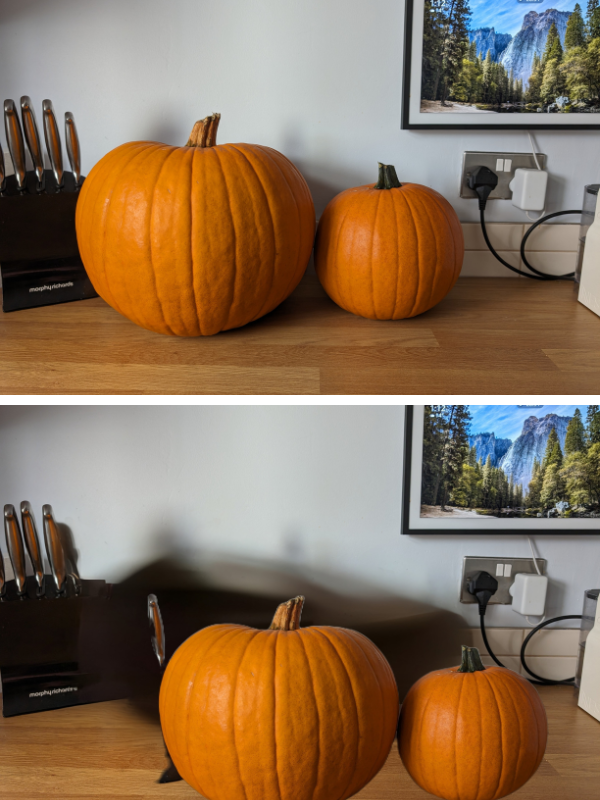
Best Take is a camera editing mode that’s significantly more impressive. This lets you swap in the expressions of people's faces from a bunch of different images to curate a perfect group picture – so everyone is open-eyed and smiling. We tested it on a family shot, and it even works on a 10-month old. This walks a fine line between being innovative and intensely creepy – but there's no denying that it works.
There's no exact release date yet, but Google promises that an AI video tool called Video Boost is also coming this year. Exclusive to the 8 Pro, it lets the phone suggest edits to your footage, such as colour fixes, stabilisation and noise reduction. We haven't had a chance to test this just yet – but will update this review when we get hands-on.
Here are samples of unedited photos taken with the Pixel 8 Pro:
Google Pixel 8 Pro software and performance
Boot up the Pixel 8 Pro and you're met with Google’s new operating system: Android 14, which essentially looks just like Android 13. It's still very fast and free from unwanted apps – there's a big focus on the brand’s own apps, including YouTube, Gmail, Photos and Maps – and it's now powered by the latest Tensor G3 processor. It's easy to get bogged down in software and chips – but what we can say is that the 8 Pro is fast and very responsive, with no lags or crashes.
One of the new apps in the menu is Thermometer – and that's where you can control the temperature sensor in the camera module. This lets you hold the phone up to objects – food, drink, glass, clothing etc – and check how hot or cold they are, but it's not designed to work on humans. We tested it on a mug of coffee and an ice lolly and sure enough it showed us the temperature. What more is there to say? Why is it here? Not sure. Perhaps Google has grand plans for future updates.
One actually useful software feature is that Google has now managed to use machine learning to make face unlocking secure to the level that it can be used with banking and payment apps – any other Pixel is limited to scanning a fingerprint.
We know from the movies, whether it's Blade Runner, Her or 2001: A Space Odyssey, that AI is pretty smart (and may probably plot against us at some point). So on the topic of AI, you can now generate unique wallpapers using AI, too. It's not totally unrestricted: you choose from a predefined theme (with examples being Painting, Night, Terrain and Luminous) and the phone makes a suggestion – for one we got 'A painting of spaceships in the 19th century realist style' – before generating samples you can scroll through. Don't like any? Hit 'Inspire Me' to move on. We like it – but wish it would let you make personalised suggestions. Maybe another for a future update.
It's a shame that the Summarise feature – which gives you a description or translation of a webpage – is limited to the US, and we hope it rolls out to the UK, too. It's welcome, however, that Google is promising seven years of software and security updates for the Pixel 8, so you could theoretically still be using the phone in October 2030. Will you? Probably not – but it means the handset may hold its value for longer when you eventually decide to trade it in for a newer model.
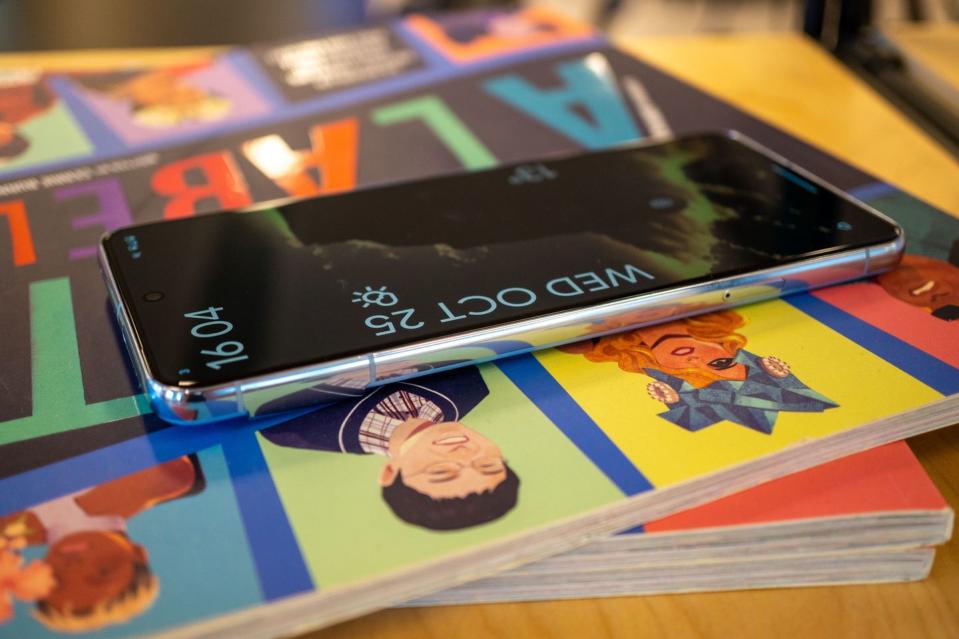
Google Pixel 8 Pro battery
The 5,050mAh battery on the Pixel 8 Pro easily lasts for a full day of use before needing a top up. It’s not a stunning update from the 7 Pro, but in our testing so far we’ve found no radical drain under moderate use – checking our socials, taking some photos during a family day out, listening to Spotify and YouTube.
If you’re doing heavy gaming or loads of video and photo editing, we do expect you’ll need to charge it sooner – but that’s the same for every flagship. It charges to around 60% in half an hour.
Google Pixel 8 Pro drawbacks
Some of our complaints with the Pixel series we've had for a while now. The Pixel 8 Pro needs a case to counteract the slippiness of the casing, and even the new matte finish doesn't add enough grip for us to feel confident that it's not going to slide off the desk. It's also still a big phone so it can be a struggle to reach all corners of the screen – plus Google doesn't let you expand the storage with a microSD card.
While the AI modes are fun to play with and show off, we can't shake the feeling that they aren't always actually that useful, or just a bit creepy. Some, like the Magic Editor, are also quite slow, and require you to back up your images before they can be scanned. The temperature sensor is baffling. Sure, it's a nice way to check if your tea is too hot before taking a sip, but we can't say we've used it once after our initial test. It doesn't have the proper clearance (at least not yet) to be used as a medical device, so it's not designed for body temperature readings, either.
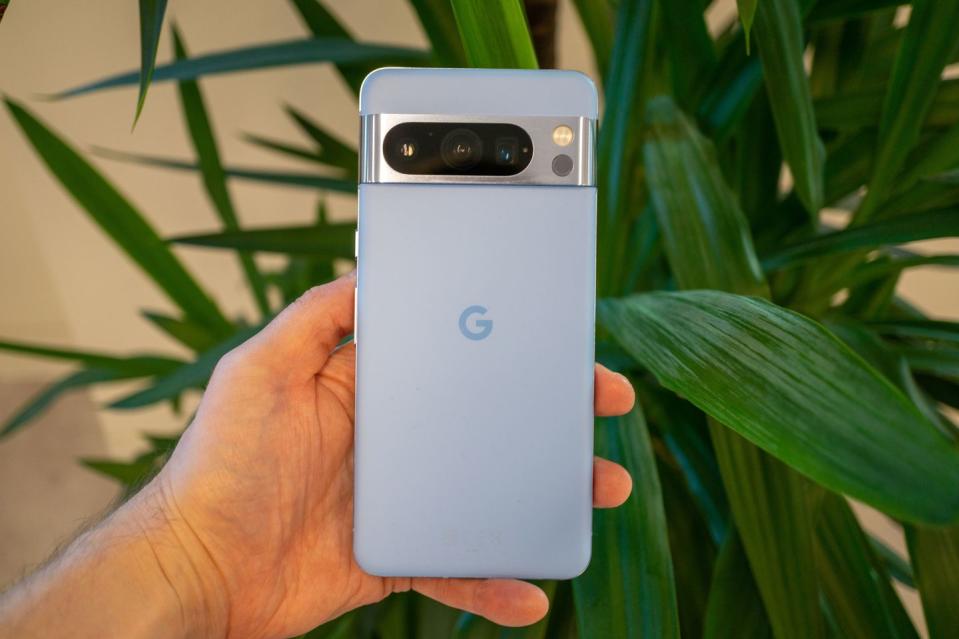
Google Pixel 8 Pro verdict
The Pixel 8 Pro is the Android phone for power users and photographers – the pro controls give you more ways to change settings such as the ISO and shutter speed, while AI is baked into the camera system to give you excellent picture quality and lots of editing options. The new blue colour looks great, and we also like the new rounded design, with a big, bright screen that's excellent for watching movies.
Even though Google increased the price this year from £849 to £999, we think there's enough to justify the asking price when the handset is compared to other flagships, particularly the iPhone 15 Pro (£999) and Samsung S23+ (1,049). That said, casual users who don't need an extra telephoto lens and a few extra AI modes are still likely to be better off with the Pixel 8 (£699) – you're getting so many of the same features, performance and software support in a more compact form factor.
You Might Also Like

 Yahoo News
Yahoo News 
